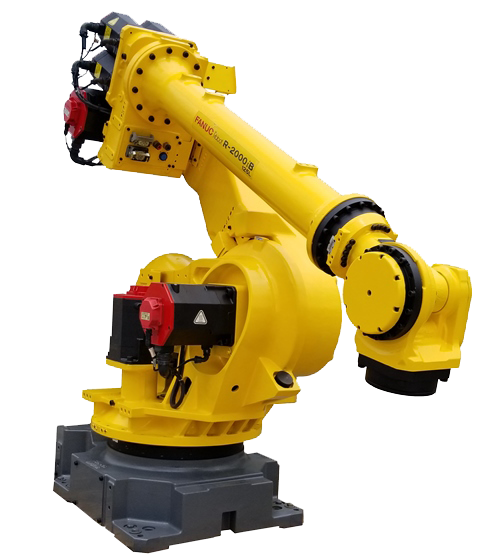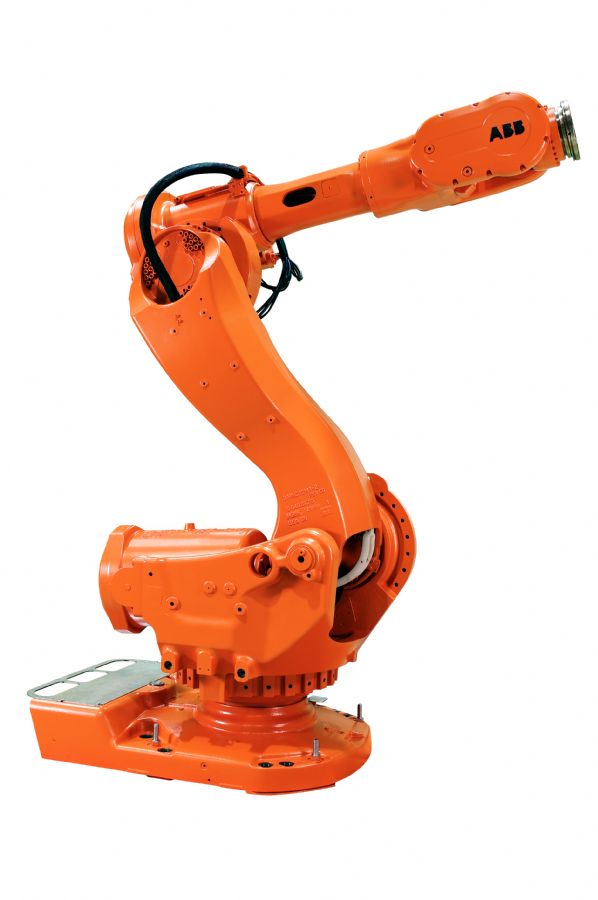Robots Done Right |
Used Robot Sales |

Machining Robots

Machining in manufacturing is defined as a process in which a piece of raw material is cut into a desired shape and size by a controlled material removal process. Machining processes may include drilling, reaming, milling, and cutting. Industrial robots are being deployed for machining processes as an alternative to more traditional milling, turning, and CNC machines. These machines are often large and lack manufacturing flexibility when it comes to machining big or irregular shaped parts. Machining robots solve these headaches for manufacturers, allowing for greater part flexibility and precision than other machining equipment.
Robotic machining involves controlling the path of the robot and the tool center point. Many robots used for machining applications have robotic arms that are specifically designed for these processes. These robot arms tend to be more rigid and stiff, resolving previous robotic machining issues with hard materials such as metal. Machining robots utilize CAD software that is translated into programming language for the correct robot path and tooling placement, resulting in precise and controlled operation. Robots used for machining tasks will also be integrated with an EOAT depending upon the specific process being carried out. These processes include milling, polishing, deburring, drilling, and grinding. The addition of advanced robotic vision systems and force sensors has immensely improved robot machining.
Robotic machining can be used to shape a variety of material types. Unlike other machining equipment, industrial robots can work with both hard and soft materials including metal, wood, plastic, foam, stone, graphite, fiberglass, and composite. Machining robots are especially advantageous for softer materials and have much greater accuracy with such materials than CNC machines. Many industries have adopted industrial robots for their machining processes including the aerospace, automotive, foundry, and medical industries. For instance, the aerospace industry may use a FANUC M-710ic/20L to drill thousands of holes along a plane’s fuselage. While in the automotive industry the FANUC R2000 210f is used to de-flash stamping dies.
The growth of industrial robots being deployed for machining processes can be attributed to their many advantages they over other machining equipment. Robots are much more versatile since they can work with a variety of part sizes and materials. Their larger work envelopes can accommodate bigger workpieces easily as opposed to CNC machines that are very limited when it comes to part size. This is especially important to those with product lines that are prone to changes. Users will likely not experience an issue with a part being too big when using a Yaskawa Mh50-20 for machining. This is likely why those in the aerospace and automotive industry have incorporated machining robots to their manufacturing processes.
Most industrial robots have 6 axes or 6 degrees of freedom, which allows them more flexibility and range of motion to machine any part shape regardless of complexity. Using a ABB IRB 4400 for machining tasks expands manufacturing capabilities to produce more complex and high-quality products. In addition, robots are multi-process machines being able to complete several machining tasks for the upmost efficiency. A FANUC M-710ic/50 can cut, drill, and deburr, while a CNC machine can only be utilized for one specific task.
Contact us by email mm@robotsdoneright.com or phone (440) 724-6568 today to discuss buying or selling an machining robot.